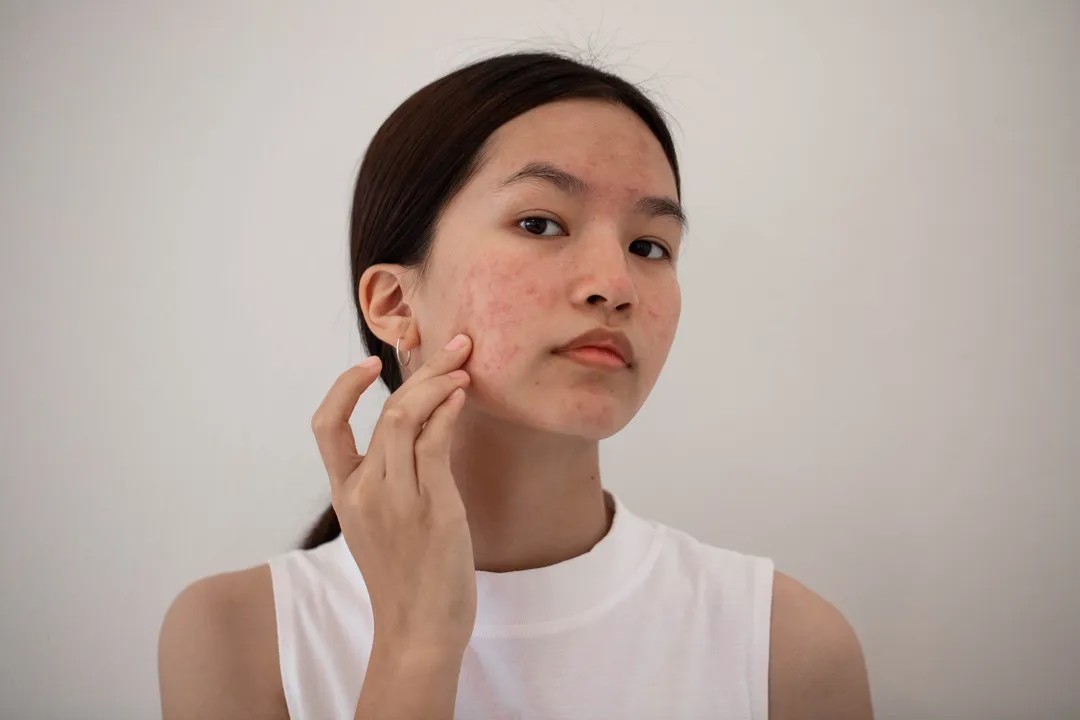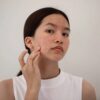The connection between our mental state and physical health is increasingly recognised. This is especially true in the field of skin care, where an ancient practice is finding new, scientific relevance. This article provides an overview of how a focused therapeutic technique is being used to address various skin conditions.
This approach involves a unique psychophysiological state. It is characterised by narrowed awareness and heightened susceptibility to suggestion. Pioneers like Marmer described this state back in 1959. Today, we understand how this altered consciousness can influence the body’s physiological processes.
Interest in such complementary methods is substantial. Studies show that up to 69 per cent of individuals with dermatologic disease have tried alternative medicine. This demonstrates a clear desire for holistic treatment options among patients.
The growing discipline of psychodermatology formally explores the mind-skin link. It acknowledges that psychological factors significantly affect health outcomes. Within this framework, the discussed therapy offers a powerful tool. It allows individuals to actively participate in their own healing journey, complementing conventional treatment.
Key Takeaways
- This practice represents a psychophysiological state that can positively influence the body.
- A significant majority of individuals with skin issues explore complementary therapies.
- Psychodermatology is a recognised field that studies the connection between the mind and the skin.
- This technique serves as a bridge between psychological wellness and physical skin health.
- It empowers patients to take an active role in their management plan.
- The approach can be particularly useful for conditions that are resistant to standard care alone.
Understanding the Connection Between Mind and Skin
The skin and the brain share a deep, biological connection that begins before birth. Both tissues develop from closely related embryonic layers, the neuroectoderm and cutaneous ectoderm. This shared origin establishes a lifelong, intrinsic link between the nervous system and the skin.
Neurocutaneous Interactions
This link facilitates constant, two-way communication. Sensory receptors in the skin send signals about touch and temperature to the brain. In response, the nervous system sends instructions back to regulate blood flow and other functions.
This feedback loop is vital for maintaining healthy skin. It helps control temperature and respond to environmental changes. The body uses this pathway to keep the skin in an optimal state.
Impact of Autonomic Responses on Skin Disorders
The autonomic nervous system is a key player in this relationship. During periods of stress or anxiety, this system can become dysregulated. This disruption can trigger inflammatory responses that manifest as skin disorders.
For instance, studies strongly link psychological stress to flare-ups of psoriasis and eczema. The theory suggests that heightened anxiety leads to dysfunctional autonomic function. This, in turn, can worsen the condition.
This is where certain psychological techniques, including hypnosis, show promise. They may help patients influence these typically automatic processes. By learning to modulate the nervous system‘s state, individuals can potentially reduce inflammatory triggers. This approach addresses the root cause, offering a complementary strategy in dermatology.
Cutting-Edge Strategies for hypnosis in dermatology
Contemporary treatment strategies are blending mental focus with physical healing for skin health. These approaches represent significant advances in complementary care.
Innovative Treatment Techniques and Protocols
Supportive ego-strengthening therapies form the foundation of modern protocols. Positive suggestion allows individuals to envision healing outcomes during therapeutic sessions.
Remarkable studies demonstrate the mind-body connection’s power. Localised physical changes can occur through focused mental influence alone.
Induction methods capitalise on natural bodily rhythms. The trance state occurs during natural relaxation cycles throughout the day.
Assessing Patient Suitability and Hypnotisability
Patient selection is crucial for successful outcomes. Genetic factors influence individual susceptibility to these techniques.
The table below outlines key assessment considerations:
| Assessment Factor | Low Susceptibility | Medium Susceptibility | High Susceptibility |
|---|---|---|---|
| Genetic Profile | Valine alleles dominant | Mixed alleles | Methionine alleles dominant |
| Hypnotic Induction Profile Score | 0-5 points | 6-11 points | 12-16 points |
| Treatment Success Rate | Lower effectiveness | Good results | Best outcomes |
| Recommended Approach | Alternative methods | Standard protocols | Advanced techniques |
Children typically respond well to simplified induction methods. Their natural suggestibility often leads to superior long-term results.
Professional training through recognised organisations provides essential skills. Structured programmes ensure practitioners develop proper technique application.
Clinical Evidence and Expert Opinions
A substantial body of clinical research now validates the therapeutic application of mind-based techniques for various dermatological concerns. This evidence, drawn from numerous studies, demonstrates significant efficacy for a range of common skin disorders.
Randomised Controlled Trials and Case Studies
Research on verrucae provides compelling data. Published controlled trials report success rates for treatment warts ranging from 27 to 55 per cent. Some studies show that 53 per cent of patientsimproved within three months after just five hypnotherapy sessions.
Comparative research is particularly telling. Hypnotherapy warts protocols have outperformed traditional topical treatments and placebo. In these controlled trials, all subjects receiving the mental approach experienced greater wart reduction.
Remarkable cases highlight the specificity of suggestion. In one study, targeted hypnosis aimed at one side of the body resulted in unilateral wart resolution in nine out of 10 patients. This illustrates the potential precision of hypnotherapy.
For atopic dermatitis, the efficacy is also clear. One trial compared standard topical treatment to this therapy. Patients treated with this therapy showed greater reductions in itching and a 60 per cent decrease in corticosteroid use.
Impressive results extend to psoriasis. Controlled trials involving highly susceptible individuals achieved up to 75 per cent skin clearing. This underscores the importance of patient selection for this treatment of chronic disorders.
Insights from Surgical Arena Ltd
Expert opinions lend further support. Clinical insights from organisations like Surgical Arena Ltd acknowledge the growing role of these techniques. They recognise its value as an adjunct for patients with skin disorders resistant to conventional care.
Peer-reviewed journals provide robust validation. Landmark research, such as a 1992 study referenced in the American Journal of Clinical Hypnosis, showed complete wart clearance in a majority of patients. The Journal of Clinical and Experimental Hypnosis also publishes findings confirming the efficacy of this approach for various disorders.
The Role of Guided Meditation and Complementary Therapies
Complementary therapies are gaining traction as valuable adjuncts to traditional skin care protocols. These approaches recognise the profound connection between mental states and physical manifestations.
Integrative Approaches as Championed by The Psychodermatologist
Guided meditation and similar techniques operate on the same fundamental principle as more directed approaches. Both modalities engage the subconscious mind to produce therapeutic changes. The Psychodermatologist emphasises that these methods work by quieting the conscious mind.
This allows individuals to communicate more effectively with their subconscious processes. For some patients, the term “guided meditation” feels more comfortable than other labels. This accessibility ensures therapeutic benefits reach a wider range of people.
Research demonstrates practical applications beyond disease treatment. During dermatologic procedures, these techniques significantly reduce anxiety levels. Patients experience greater comfort and improved outcomes.
An important insight addresses how negative self-talk can function as harmful self-suggestion. Chronic stress may manifest through various skin conditions. Deliberate practice of guided meditation reverses these patterns.
The integrative model supports home-based reinforcement between clinical sessions. Patients use recordings or self-directed practice to strengthen therapeutic effects. This approach fosters active participation in the healing journey.
By combining these complementary therapies, patients benefit from multifaceted strategies. These address both psychological triggers and physiological manifestations. The result is enhanced overall treatment efficacy for lasting skin health improvements.
Conclusion
Evidence-based practice in skin care now acknowledges the significant role of mind-body interventions in comprehensive treatment plans. The accumulated research demonstrates that hypnotherapyrepresents a valuable option for various skin disorders, particularly those with psycho-cutaneous components.
While current evidence is promising, larger randomised controlled trials would help validate findings and refine protocols. Understanding the precise mechanism hypnosis employs could further optimise therapeutic outcomes for complex conditions like psoriasis and atopic dermatitis.
This approach offers particular promise for patients whose skin condition proves resistant to conventional treatment. As research continues, hypnosis may transition from alternative to standard adjunctive therapy within mainstream dermatology.
FAQ
How does the mind influence skin conditions?
The mind and skin are intimately linked through the nervous system. Stress and anxiety can trigger or worsen many dermatological issues, such as psoriasis and eczema, by affecting the body’s immune responses and inflammatory pathways. This connection forms the basis for using psychological approaches in treatment.
What specific skin disorders can be treated with hypnotherapy?
Clinical studies show that hypnotherapy can be effective for a range of conditions. These include warts, atopic dermatitis, and psoriasis. The therapy helps patients gain better control over symptoms by reducing stress and modulating the body’s reaction to the condition.
Is hypnotherapy a standalone treatment for skin problems?
It is often used as a complementary therapy alongside conventional medical treatments. For instance, guided meditation and relaxation techniques can enhance the efficacy of primary treatments, helping to manage anxiety related to dermatologic procedures or chronic symptom flare-ups.
What does a typical hypnotherapy session for a skin condition involve?
A session typically begins with an induction to help the patient achieve a relaxed trance state. The therapist then uses tailored suggestions aimed at improving the skin’s health, such as visualising calmness or reduced inflammation. The goal is to harness the patient’s own focus to support healing.
How is a patient’s suitability for this kind of treatment assessed?
A practitioner will evaluate a person’s hypnotisability and openness to the process. Not everyone is equally receptive, so an initial consultation determines if the approach is a good fit. A positive attitude and ability to concentrate are beneficial for a successful outcome.
What evidence supports the use of hypnosis in dermatology?
Evidence comes from various sources, including randomised controlled trials and case studies published in journals like the American Journal of Clinical Dermatology. These studies demonstrate the potential benefits, particularly for conditions like warts and eczema, where psychological factors play a significant role.









